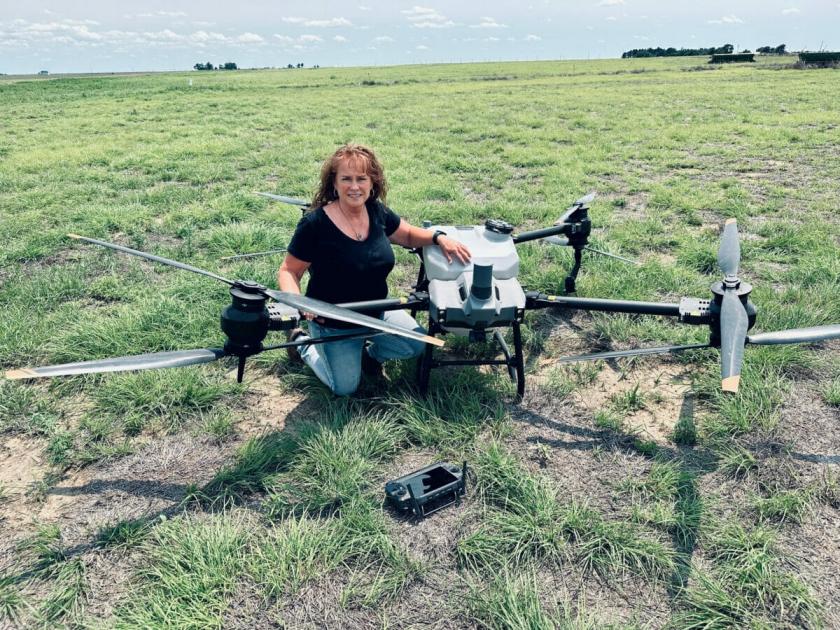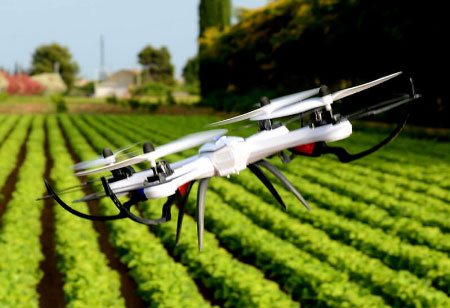Energizing Agriculture: The Drone Charger Battery
In recent years, the incorporation of drones into the agricultural sector has led to a transformative shift in the way farmers oversee their crops and enhance crop yields. Drones, equipped with an array of sensors and cameras, have emerged as indispensable tools for monitoring crop health, identifying pest and disease issues, and optimizing irrigation processes. However, the smooth and efficient functioning of these agricultural drones hinges significantly on a critical component – their batteries.
The significance of the agriculture drone charger battery cannot be emphasized enough. These batteries serve as the lifeblood of drones, furnishing the essential energy required for tasks like aerial surveys, data collection, and precision agriculture operations. In the absence of dependable and high-performance batteries, the efficacy of agricultural drones faces a substantial threat. This vulnerability could potentially result in diminished crop yields, elevated operational expenditures, and a compromise on sustainability efforts.

Comprehending Drone Charger Batteries
Objective and Importance
Drone charger batteries stand as pivotal components in the operation of agricultural drones, fulfilling two critical roles: energy reservoir and power supplier. Their importance lies in their ability to furnish the essential electrical energy needed to propel drones into the air, granting them the capability to execute a spectrum of tasks integral to modern farming practices.
1) Energy Storage: Drone charger batteries are meticulously engineered to efficiently store electrical energy. They amass energy during the charging process, converting and retaining it in a chemical form for subsequent use. This accumulated energy proves vital for enabling extended flight durations and energizing the drone’s onboard systems.
2) Power Provision: Once charged, these batteries function as the primary power sources for the drone’s electric motors and electronic components. This power supply is indispensable for elevating the drone above the ground, sustaining its flight, and operating various sensors, cameras, and communication systems.
Varieties of Batteries Employed
In agriculture drone charger battery applications, several battery types find common usage, each endowed with its unique set of merits and drawbacks. The selection of battery type hinges upon factors such as drone design, desired flight duration, and payload capacity. Some of the prevalent battery types encompass:
1) Lithium-Polymer (LiPo) Batteries: LiPo batteries, renowned for their lightweight nature and elevated energy density, find their niche in drones requiring agility and extended flight times. They are prevalent in both consumer-grade and professional agricultural drones.
2) Lithium-Ion (Li-ion) Batteries: Li-ion batteries strike a balance between energy density and safety. Their reliability and stability make them a preferred choice in agricultural applications where safety holds paramount importance.
3) Hydrogen Fuel Cells: Emerging as a technology of interest, hydrogen fuel cells offer prolonged flight times and reduced environmental impact. They are garnering attention for their potential in long-endurance agricultural drones.
Critical Technical Specifications
When assessing drone charger batteries, several critical technical specifications warrant consideration to ensure the optimal performance and success of drone missions:
1) Capacity (mAh or Wh): Battery capacity delineates the quantity of energy the battery can retain. Higher-capacity batteries generally facilitate extended flight times, albeit potentially adding weight to the drone.
2) Voltage (V): Voltage sets the power output of the battery. It must align with the voltage requisites of the drone’s electric motors and systems to ensure proper operation.
3) C-rating: The C-rating signifies the battery’s discharge capability. Higher C-ratings are pivotal for drones necessitating swift power bursts during flight.
Features and Benefits
Efficiency and Charging Speed
Efficiency and charging speed are paramount attributes when evaluating the features and benefits of drone charger batteries in agricultural applications.
1) Efficiency: High-efficiency drone charger batteries are designed to minimize energy losses during charging and discharging processes. This translates to longer flight durations, as less energy is wasted as heat. Improved efficiency contributes to extended operational windows for agricultural drones, allowing for more tasks to be completed on a single charge.
2) Charging Speed: Rapid charging capabilities are crucial in agriculture, where time-sensitive operations like crop monitoring and pest control require swift deployment of drones. Batteries with fast-charging technology reduce downtime between flights, maximizing the productivity of agricultural drone fleets.
Compatibility with Agriculture Drones
The compatibility of drone charger batteries with agricultural drones is a key consideration for seamless integration and optimal performance.
1) Form Factor and Size: Batteries should be designed to fit the specific battery compartments of agricultural drones without modifications. Compatibility in terms of form factor ensures hassle-free installation and secure connections.
2) Voltage and Power Compatibility: Drone charger batteries must align with the voltage and power requirements of the drone’s electrical system. A mismatch can result in reduced performance or even damage to the drone’s components.
Safety Mechanisms and Protection
Safety is of paramount importance when it comes to drone charger batteries, especially in agricultural environments where drones operate near crops, livestock, and personnel.
1) Overcharge and Overdischarge Protection: Batteries equipped with overcharge and over-discharge protection mechanisms safeguard against excessive voltage levels during charging and prevent the battery from discharging beyond safe limits.
2) Temperature Regulation: Thermal management systems within batteries help maintain optimal operating temperatures, preventing overheating during extended flight missions or hot weather conditions.
Environmental Impact
The environmental impact of drone charger batteries is a growing concern, and sustainable options are gaining traction in agriculture.
1) Battery Chemistry: Lithium-based batteries, while prevalent, can have environmental drawbacks due to their resource-intensive manufacturing and disposal challenges. Emerging eco-friendly battery technologies, such as solid-state batteries or recyclable materials, are being explored to reduce the ecological footprint.

2) Recycling and Disposal: Responsible disposal and recycling of drone charger batteries are essential to mitigate environmental harm. Manufacturers and users should be aware of proper disposal methods and recycling programs to minimize pollution.
3) Energy Efficiency: Sustainable agriculture benefits from energy-efficient drones, as they reduce the overall carbon footprint. Energy-efficient batteries contribute to longer flight times and reduced energy consumption during charging, aligning with environmentally conscious practices.
Maintenance and Care
Cleaning and Storage Guidelines
To uphold the integrity and performance of drone charger batteries in agricultural settings, it is imperative to adhere to proper cleaning and storage procedures.
1) Cleaning: Conduct regular inspections of batteries for the presence of dirt, dust, or debris that may accumulate during field operations. Utilize a clean, dry, non-conductive cloth to delicately clean the battery’s exterior. Ensure that no foreign substances are found on the battery connectors to avert electrical complications.
2) Storage: When preparing batteries for prolonged storage, adhere to these guidelines:
Keep batteries in a cool, dry environment, sheltered from direct sunlight and extreme temperature fluctuations.
Maintain the storage temperature within the range recommended by the battery manufacturer.
Before storage, ascertain that batteries are neither fully charged nor fully discharged; a charge level of approximately 50% is typically recommended for extended storage periods.
Periodically monitor the storage voltage, recharging if it descends below the minimum voltage threshold specified by the manufacturer to prevent over-discharge.
Troubleshooting Common Issues
Common battery-related issues may confront agricultural drone operators. Familiarity with troubleshooting these problems is essential to ensure uninterrupted drone operations.
1)Decreased Flight Time: In the event of a substantial reduction in flight duration, consider the following:
Inspect the battery’s capacity; it may have diminished over time, necessitating replacement.
Verify that the battery is fully charged prior to each flight.
Scrutinize the drone for excessive weight or damage, as these factors can impede flight efficiency.
2) Battery Overheating: Overheating batteries pose safety hazards. If overheating is observed, implement the following actions:
Prolonging Battery Lifespan
Extending the longevity of drone charger batteries is essential for cost-efficiency and sustained performance.
1) Steer Clear of Deep Discharges: Minimize deep discharges, as they can expedite battery wear. Opt to land the drone when the battery level reaches a safe minimum rather than fully depleting it.
2) Adhere to Proper Charging: Employ chargers recommended by both the drone and battery manufacturers. Limit fast charging to instances of necessity, as it can generate excess heat, potentially impacting battery durability.
3) Preserve Storage Voltage: Maintain batteries at a suitable storage voltage, approximately 50%, when they are not in use for extended durations. This practice helps prevent over-discharge and safeguards battery health.
4) Perform Regular Inspections: Periodically scrutinize batteries for physical damage, such as dents or punctures, and promptly replace any compromised batteries.
CONCLUSION
In today’s modern agriculture, where precision, efficiency, and sustainability hold paramount importance, the agriculture drone charger battery plays a transformative role. These seemingly inconspicuous power sources serve as the life force of agricultural drones, enabling them to gracefully traverse the skies above fields, gather invaluable data, and undertake tasks that were once laborious and time-intensive. As we wrap up our exploration of drone charger batteries in agriculture, it becomes abundantly clear that they are far more than mere components; they are the dynamic force propelling a technological revolution that is reshaping the agricultural landscape.
To sum it up, the drone charger battery is not a mere cog in the wheel; it is the central pivot empowering farmers to cultivate their land with enhanced precision, curtail resource consumption, and usher in a new era of agricultural productivity. It stands as a testament to the harmonious fusion of technology and agriculture, where each charge propels us closer to a future characterized by sustainability and prosperity.



